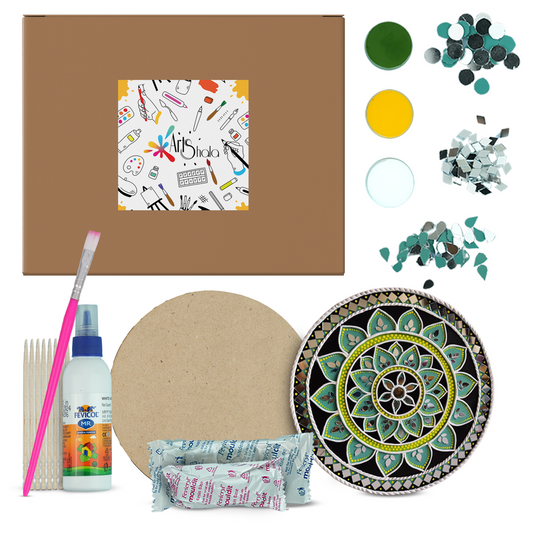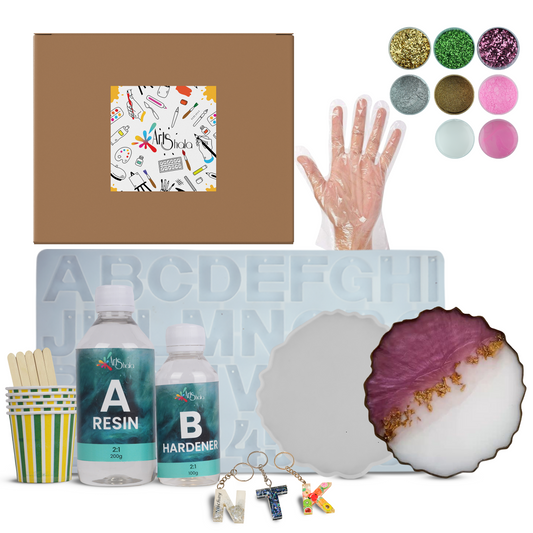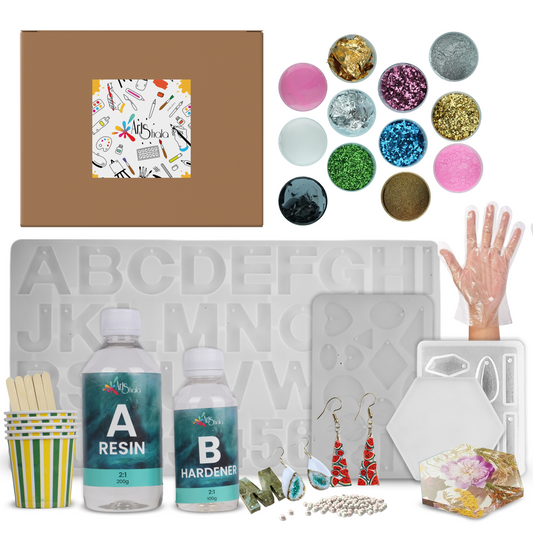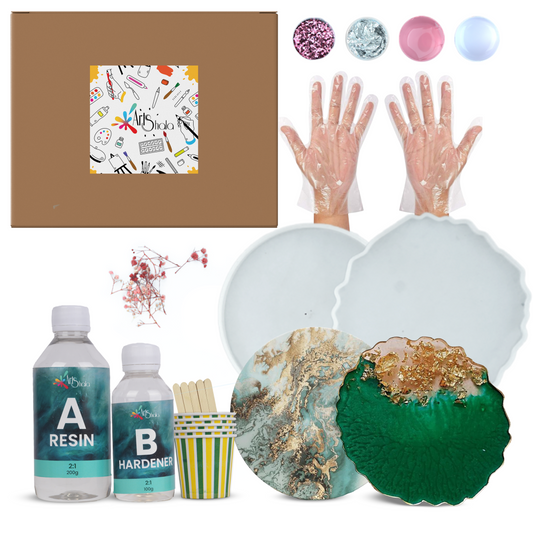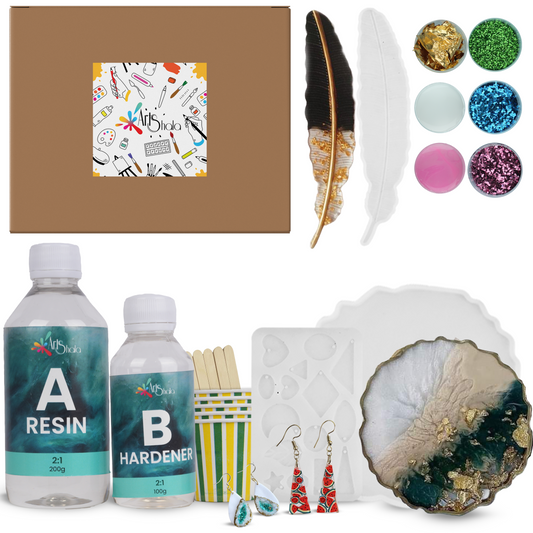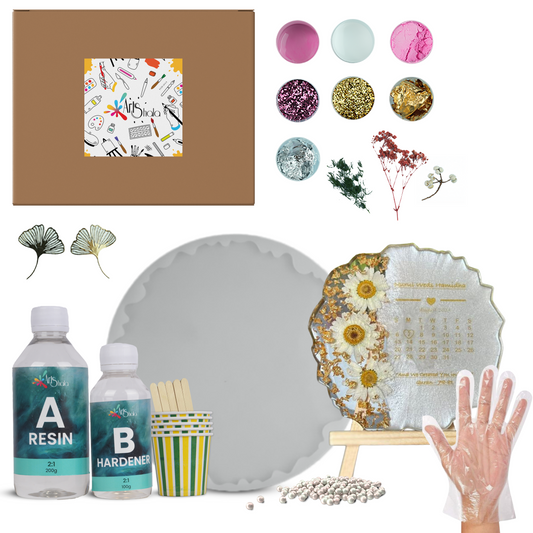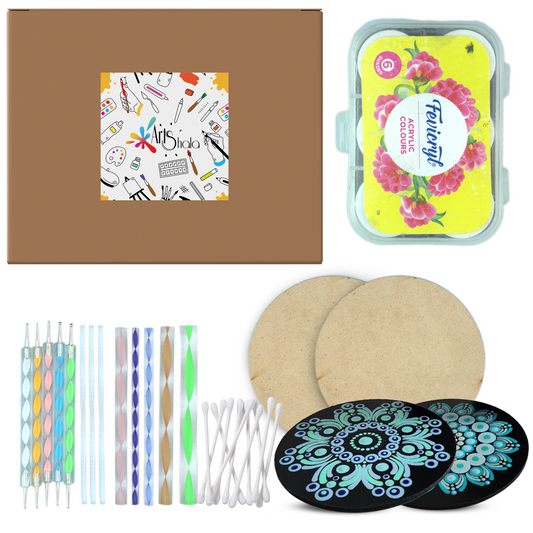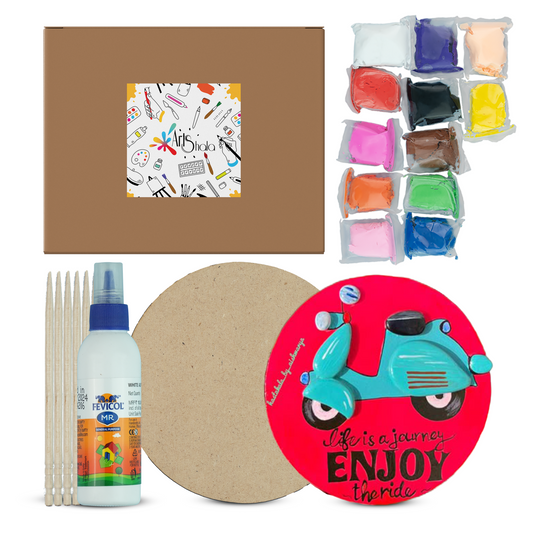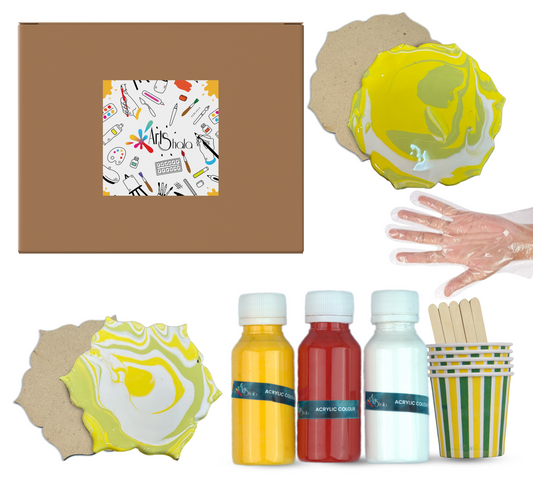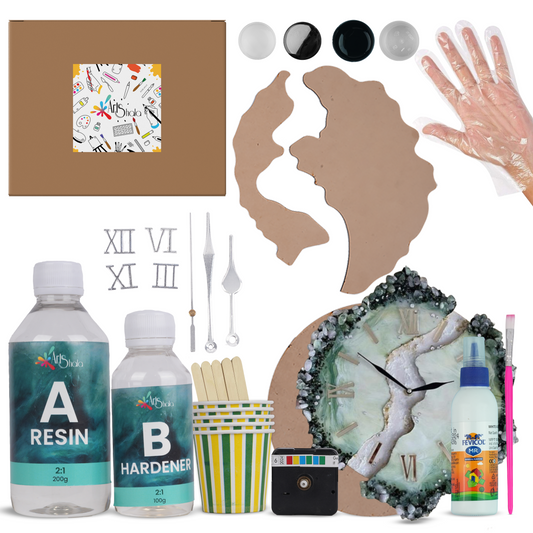Improve Your Painting: 5 Acrylic Painting Techniques
Acrylic painting has become popular among artists due to its versatility and vibrant colours. It allows for a wide choice of techniques to create stunning artwork. Exploring and experimenting with these techniques can unlock your full creative potential and produce captivating acrylic paintings. Joining an acrylic painting workshop can provide valuable hands-on experience learning new techniques. Mastering these techniques is essential for enhancing your artwork and taking it to the next level. In this blog, we will explore five acrylic painting techniques that can help you improve your artwork. So, let's start and discover how to enhance your acrylic paintings through these techniques.
1. Wet Brush on Dry Canvas
The wet brush on dry canvas technique in acrylic painting involves applying wet paint with a brush onto a dry surface. This method allows for precise strokes and sharp edges, making it ideal for detailed work and controlled blending. Steps to effectively use this technique:
- Prepare the canvas: Start with a dry and primed canvas to ensure the paint adheres well and retains vibrancy.
- Mix the paint: Thin the acrylic paint with water or a medium to achieve the required consistency for smooth application.
- Apply the paint: Use a fine-tipped paintbrush to apply the wet paint onto the dry canvas, allowing for intricate details and crisp lines.
Tips for Achieving Desired Effects
- Work quickly to blend colours before they dry to avoid visible brush marks.
- Experiment with different paintbrush sizes and shapes to create varying textures and details.
- Practice layering to build depth and dimension within your artwork.
2. Wet Brush on Wet Canvas
The wet brush on wet canvas technique involves applying paint to a surface that is already wet with either water or acrylic paint. This method allows for seamless blending and creates a soft, diffused effect. Here's how to effectively use this technique:
- Preparation: To keep the canvas moist, apply a thin layer of water or acrylic medium.
- Application: Load your brush with paint and gently apply it to the wet surface. The colours will naturally blend and flow into one another, creating a harmonious transition.
- Blending: Use soft, sweeping brushstrokes to blend colours together on the wet canvas. Take advantage of the natural fluidity to create smooth gradients and transitions.
Tips for Achieving Desired Effects
- Use soft brushes with flexible bristles to facilitate smooth blending.
- Work quickly to take advantage of the wet surface before it dries.
- Experiment with different colour combinations and layering to create depth and dimension in your artwork.
Examples of artwork that demonstrate the fluidity created by this technique include ethereal landscapes with seamlessly blended skies and softly merging colours in abstract compositions.
3. Dry Brush Technique
The dry brush technique is a popular acrylic painting technique that can create texture and depth in your artwork. Using a dry brush with minimal paint can achieve a scratchy, rough effect that adds interest and dimension to your paintings. Here's a step-by-step guide on how to effectively use the dry brush technique:
- Start with a dry brush: Make sure your brush is completely dry before you begin. This will allow the bristles to pick up a small amount of paint, creating a more controlled and textured effect.
- Load the brush lightly: Dip the tips of the bristles into your desired paint colour. Use a small amount of paint to avoid saturating the brush.
- Remove excess paint: Before applying the paint to your canvas, gently wipe off any excess paint on a paper towel or palette. This will help you achieve a drier brush effect.
- Apply light pressure: When applying the paint to the canvas, use light pressure. The goal is to create short, quick strokes that leave space gaps, allowing the underlying layers or canvas texture to show through.
Tips for Achieving Desired Results
- Experiment with different brushes: Different brushes can produce different textures and effects. Try using brushes with stiff bristles for more pronounced texture or softer brushes for smoother strokes.
- Vary your stroke length and direction: Varying the size and direction of your strokes can create interesting patterns and textures on your canvas.
- Practice control: Controlling the amount of paint on your brush is key to achieving desired results with this technique. Start with less paint and gradually add more if needed.
The dry brush technique is a versatile acrylic painting technique that can add texture, depth, and interest to your artwork. You can achieve unique and expressive results in your paintings by practising control and experimenting with different brushes.
4. Thin Paint Application Technique
The thin paint application technique is a fundamental acrylic technique that involves applying thin layers of paint to create transparency and luminosity in your artwork. This technique allows you to build up colours gradually, creating subtle transitions and ethereal effects. Here is a step-by-step guide on how to achieve the desired results with the thin paint application technique:
- Start with a clean and dry canvas or painting surface.
- Dilute your acrylic paint with water or a medium specifically designed for thinning paint. Aim for a consistency similar to that of watercolour.
- Use a soft brush with synthetic bristles, which tend to hold less paint and allow for smoother application.
- Apply the thinned paint in thin, even layers, letting each layer to dry before adding the next one. This will help prevent any unwanted blending or muddying of colours.
- Be patient and build up your colours gradually. Remember that it's easier to add more paint than it is to remove excess paint.
Tips for Achieving Desired Results
- Experiment with different levels of transparency by adjusting the amount of water or medium you mix with your paint.
- Use glazing techniques by applying multiple thin layers of transparent colours to create depth and luminosity.
- Take advantage of the translucency of this technique by layering complementary or contrasting colours to create interesting colour interactions.
5. Gradient Relief Technique
The gradient relief technique is a versatile acrylic painting technique that allows artists to make smooth gradients with a relief texture in their artwork. This technique brings depth and dimension to the painting, making it visually exciting and engaging. Here's a step-by-step guide on how to use this technique effectively:
- Prepare your canvas: Start priming it with gesso and let it dry completely. This will provide a smooth surface for your acrylic paint.
- Choose your colours: Select two or more colours for the gradient effect. It is recommended that you choose colours that blend well together.
- Apply the base colour: Use a brush or palette knife to apply the base colour evenly on the canvas. This will serve as the background for your gradient.
- Create the gradient: Apply the second colour from one side of the canvas with a clean brush or palette knife. Gradually blend it into the base colour, creating a smooth transition between them. Depending on your desired effect, you can use horizontal or vertical strokes.
- Add texture: To achieve relief texture, gently press a palette knife or textured tool onto the wet paint. This will create raised areas in your painting, adding depth and interest.
- Refine and blend: Use a brush or palette knife to refine any areas that need blending or smoothing. You can also add more layers of colour to enhance the gradient effect.
Tips for Using the Gradient Relief Technique Effectively
- Experiment with different colour combinations to make unique gradients.
- Vary the pressure and angle of the palette knife to achieve different textures.
- Practice on a smaller canvas or paper before working on larger pieces.
- Take inspiration from nature or other artworks that showcase beautiful gradients.
Landscapes with vibrant sunsets, abstract paintings with smooth colour transitions, and still lifes with textured backgrounds are examples of artwork that demonstrate the versatility of the gradient relief technique.
Conclusion
It's essential to explore and practice different techniques to improve your artwork. The 5 acrylic painting techniques discussed in this blog provide a solid foundation for enhancing your skills and creating unique and expressive art. By mastering these techniques, you can take your paintings to new heights.
To further enhance your skills and learning journey, Contact Us on Arts Shala today, where you can explore more acrylic painting techniques and receive guidance from experienced instructors. So go ahead, grab your paintbrushes, and let your creativity shine through the mastery of these acrylic painting techniques!



